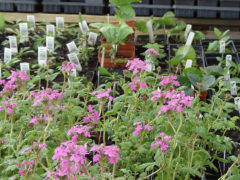
rose verbena
Glandularia {Verbena} canadensis
Brilliant pink flower clusters cover this low-growing wildflower all summer. Plants spread out to 15-18″ … Continued
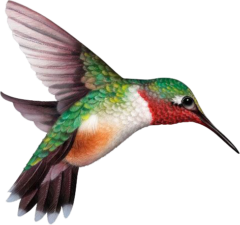 Hummingbirds, bees and butterflies are well-known pollinators, but there are thousands of unsung pollinator heroes, including moths, wasps, flies, and beetles, many mammals, birds, and reptiles, who also take on the job.
Hummingbirds, bees and butterflies are well-known pollinators, but there are thousands of unsung pollinator heroes, including moths, wasps, flies, and beetles, many mammals, birds, and reptiles, who also take on the job.
Pollinators move from plant to plant, fueling up with pollen and nectar from blooming trees, shrubs, perennials, annuals, vegetable plants, and herbs. As they move, the pollinators transport and deposit pollen, fertilizing plants and allowing them to reproduce.
Pollinator plants can be native and non-native, but not all flowering plants are equal when it comes to providing the highest quality protein-rich pollen. Many hybrids don’t even produce pollen at all. The following list includes pollen-rich plants to include in your garden to provide pollinators with food.
Local butterfly expert Lenora Larson has created these informational handouts. You can download them here!
• Butterflies: Flying Flowers in your Garden!
• A Vital Connection: Native Plants and Butterflies
• Long Lips Farm Caterpillar Foodplants
• Butterfly Bartending: Nectar Flowers
• Long Lips Farm: Selected Butterfly Nectar Flowers
• Bee Friendly: Plants for Bees and Other Pollinators
Since 1970 the population of North American birds has dropped nearly 30% — almost three billion birds have vanished from our forests, grasslands, and backyards in less than a human lifetime. It’s a chilling fact that makes it clear that we must act as individuals to help ensure their survival.
Most importantly, ninety-six percent of all terrestrial bird species rear their young on insects so it is also important to grow plants that feed insects to provide a well-rounded habitat in your garden.
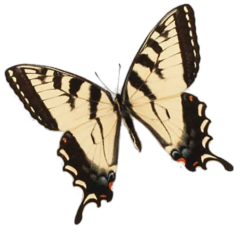

Glandularia {Verbena} canadensis
Brilliant pink flower clusters cover this low-growing wildflower all summer. Plants spread out to 15-18″ … Continued
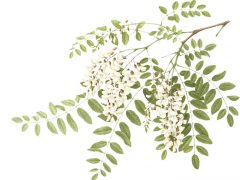
Gleditsia triacanthos 'Shademaster'
Bipinnate, golden-yellow leaves emerge in early summer, becoming greener as the season progresses. Attains a … Continued
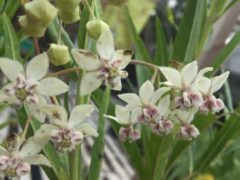
Gomphocarpus physocarpa
Native to southeast Africa, this upright shrubby is grown as an annual in Kansas and … Continued
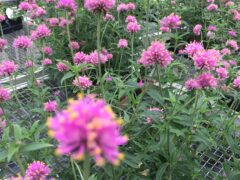
Gomphrena globosa
‘Fireworks Purple’ grows up to 24″ high and sports lavendar puffy balls with little yellow whiskers. … Continued
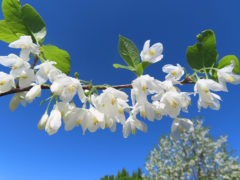
Halesia diptera
Clusters of white bell-shaped blooms cover this small native tree in late April and early … Continued
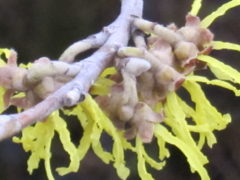
Hamamelis × intermedia 'Arnold Promise'
Easily grown with consistent moisture in well-drained soils in full sun to part shade, although … Continued
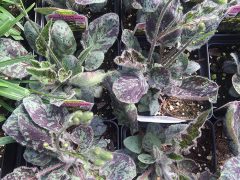
Hieracium maculatum ‘Leopard’
Striking mounds of blue-green foliage dappled in maroon purple. Tall stems of bright yellow daisies … Continued
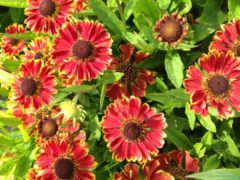
Helenium autumnale
Clusters of daisy-like flowers 2″ in diameter have distinctive wedge-shaped, bright yellow rays dome-like yellow … Continued
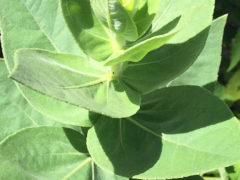
Helianthus mollis
Fine hairs cover the stems and leaves, giving this native perennial a gray-green color. A … Continued
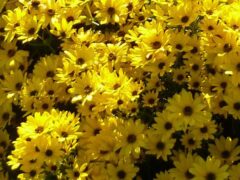
Helianthus salicifolius 'Autumn Gold'
Narrow, dark-green leaves and compact, rounded form give this perennial a shrub-like appearance during Spring … Continued
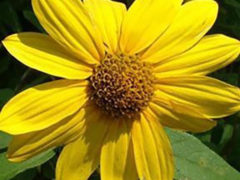
Helianthus maximiliani
State flower of Kansas Clusters of bright yellow flowers in September atop 6-8′ stalks. An … Continued
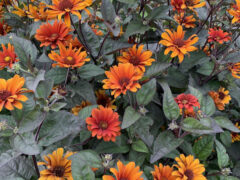
Heliopsis helianthoides var. scabra 'Bleeding Hearts'
Flowers emerge intense orange-red and mature to golden orange with red centers from July until … Continued